Buying online: the rules for safe shopping
![]()
 Have you ever made a purchase online, whether for a slimming supplement or any other product, and yet you didn’t receive your order?
Have you ever made a purchase online, whether for a slimming supplement or any other product, and yet you didn’t receive your order?
Have you ever been a victim of Internet fraud? Or had your bank details stolen, for example?
First of all, you need to know that there are many problems that can arise after a distance purchase, and since they can sometimes reach uncontrollable proportions, it’s a good idea to be aware of them and learn how to detect them in advance.
If this is the case, or even if you’re just here to get some info before making an online purchase, this article brings together all the basic info you should know before making a remote purchase.
For your own safety, please take the time to read this entire article.
What’s involved in buying online?
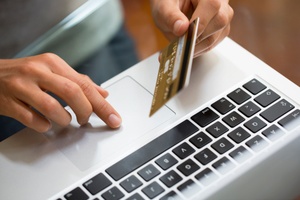 First and foremost, you need to know that online shopping is a global trend that’s growing all the time. It’s estimated that online purchases in 2017 will total almost $660 billion in the United States and $440 billion in Canada and Mexico.
First and foremost, you need to know that online shopping is a global trend that’s growing all the time. It’s estimated that online purchases in 2017 will total almost $660 billion in the United States and $440 billion in Canada and Mexico.
In 2014, the French spent 57 billion euros online. 64.9 billion euros in 2015, and in 2016, sales are estimated at 70 billion euros.
There’s no shortage of reasons for this spectacular growth. On the one hand, an increasingly fast pace of life and the resulting lack of time.
And on the other, the many advantages offered by this new means of payment: the multitude of product choices on offer, the ability to compare offers online, the fact that you don’t have to travel to the store, no more problems with parking or waiting in long queues, and of course the ability to make your purchase without constraints of time or place.
How to buy online
To make an online purchase, merchants generally accept several payment methods.
Credit cards (master card, visa,…), PayPal, bank transfers, cash on delivery… These are probably the most commonly used payment methods.
All these methods are safe and pose no risk as long as they are used in compliance with certain rules, which we will mention below.
– Payment by credit card :
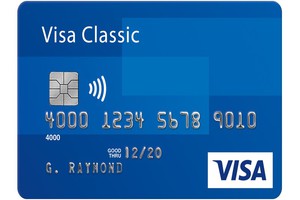 As underlined by the CNIL (Commission Nationale de l’Informatique et des Libertés), whose mission is to protect personal data, support innovation and preserve individual freedoms, the credit card data to be transmitted to finalize an online transaction are :
As underlined by the CNIL (Commission Nationale de l’Informatique et des Libertés), whose mission is to protect personal data, support innovation and preserve individual freedoms, the credit card data to be transmitted to finalize an online transaction are :
- Credit card number.
- Credit card expiry date.
- CVV or visual cryptogram, which corresponds to the three digits engraved on the back of the card.
Not only must these data not be stored by the merchant after the transaction has been completed without the customer’s express prior consent, but their use by the merchant must be very limited.
Consequently, the merchant must neither retain nor re-use this data without the cardholder’s permission.
In addition, the permitted retention period for this data is limited to 15 months, and the CVV must not be retained.
Customers must also have the right to delete their banking data. The merchant must not ask the customer for a copy of the card.
On the other hand, the merchant may ask the customer for other information to ensure maximum security of the transaction, such as the creation of a customer account, the delivery address, etc.
On the other hand, the transaction does not give the merchant the right to impose advertising on the customer.
That said, the purchase in question must not be conditional on acceptance of an advertising medium such as newsletters or commercial advertisements.
– PayPal
To use this convenient payment method, you should have or create a PayPal account.
It’s safe, risk-free and accepted by most merchants.
– Bank transfer
Bank transfers are also risk-free.
You can pay for your online purchase by bank transfer, for a small fee.
– Payment on delivery
You can also pay for your purchase on delivery, i.e. when it arrives at your home.
Payment can be made in cash or by cheque, depending on the conditions set by the merchant.
Encryption and data security
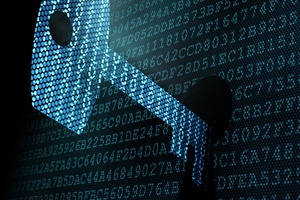 To prevent fraud or piracy of their stored data, merchants are obliged to encrypt their data.
To prevent fraud or piracy of their stored data, merchants are obliged to encrypt their data.
In other words, they must secure their data.
As a result, they must use certain standards, such as the international PCI DSS standard. The use of the 3-D Secure protocol is strongly recommended to reinforce authentication and transaction security.
Merchants should also avoid storing customer data on high-risk terminals, such as cell phones, which can be stolen.
However, if the merchant does not have the means to acquire such technology, he should use the services of a certified provider.
What to check before making an online purchase
Before placing your order online, you should first check the following points.
1. GCS (general terms and conditions of sale)
 GCS are the equivalent of a contract governing the transaction between the customer and the merchant.
GCS are the equivalent of a contract governing the transaction between the customer and the merchant.
These conditions determine the clauses governing the transaction, such as means of payment, delivery terms and conditions, returns procedure and conditions, customer service, tracking of your package, guarantees, etc.
You need to read them in their entirety, because when you place your order, you signify your acceptance of these conditions, and you will be bound by the clauses they contain.
If a site doesn’t clearly state these terms and conditions, it’s a sign of bad faith.
2. Site legal information
Legal notices are mandatory for all e-commerce sites.
They provide information about the site’s owner, contact details (address, telephone number, contact email…), host (name, address…), and in particular personal data and intellectual property.
Reading these disclaimers will enable you to identify the merchant you’re dealing with, and thus to verify the latter’s online reputation.
3. HTTPS
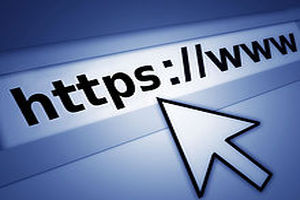 The order page on which you enter your bank details must be in HTTPS and not http. This “S” stands for secure connection: it’s the acronym for SSL (secure sockets layer).
The order page on which you enter your bank details must be in HTTPS and not http. This “S” stands for secure connection: it’s the acronym for SSL (secure sockets layer).
In your browser’s address bar, the URL (address of the site in question) must begin with https:// and you should see a locked padlock.
In fact, you shouldn’t rely solely on the logos of the payment methods displayed by the site.
4. Protecting your privacy
Sites that respect this rule display recognized quality labels (e-commerce label, quality label, etc.).
5. Site presentation
A serious site is logically coherent, visually appealing, free of spelling mistakes and advertising, and has a style that’s pleasant to read.
Beware like the plague of sites containing poorly written articles, lots of ads, pop-ups or review sites with nothing but positive testimonials.
6. User reviews
One thing’s for sure: you’ll find both positive and negative reviews.
It’s a well-known fact that satisfied people rarely come back to testify to their satisfaction.
On the other hand, a person who feels wronged will shout from the rooftops about his or her disappointment.
Another problem is that it’s difficult to distinguish between real and fake or paid testimonials.
To get a true picture, you need to do a lot of research, consult several reputable sites and use your common sense to determine the general trend of these reviews.
The Net is an open space, so anyone can express themselves freely and without restrictions or control.
7. Customer service
 Why wait until your transaction has been finalized to contact customer service?
Why wait until your transaction has been finalized to contact customer service?
Start by contacting them before you place your order, so you can be sure of the reliability of this service should you need it (in the event of a return or non-delivery of the product).
8. Payment methods
Check the payment methods accepted by the merchant and choose the one that suits you best.
Why should I use the product’s official website?
Any self-respecting merchant will have his own official website to promote his products.
What’s more, they may use other resellers to reach a larger audience.
In our experience, many merchants don’t have their own official site. Worse still, it’s sometimes impossible to know which manufacturer or entity is marketing a product on the net.
At Arnaque Ou Fiable, we believe that the presence of an official site is the first guarantee of trust.
What are the risks and hidden pitfalls of buying online?
The Observatoire National de la Délinquance et des Réponses Pénales (ONDRP) announced in its September 15, 2015 report a 60% increase in fraudulent debits among French shoppers during the period between 2010 and 2013.
– Repeated debits from your bank account
Among the many cases we’ve encountered, the most recurrent is that of repetitive direct debits without the customer’s prior consent.
Explanation:
During your search for a slimming supplement, you’ve probably come across some very attractive offers, such as receiving your product for just the shipping costs.
It’s an irresistible offer, but is it really true?
The aim of this kind of practice is to collect your bank details and then impose a (usually monthly) subscription on you.
In effect, you’ll be debited each month for the total price of the product in question, plus shipping costs for each shipment.
That’s why it’s important to read your terms and conditions carefully, to spot any hidden clauses in this kind of promotion.
– Advertising e-mails
Another risky maneuver is advertising e-mails containing links.
If you receive a promotional e-mail containing an attached file, don’t click on the link. The risk of being hacked is too high.
A hacker could easily gain access to the data stored on your terminal and consequently appropriate your bank details.
– Phishing
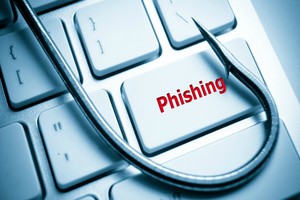 Another widespread technique is phishing.
Another widespread technique is phishing.
Also known as phishing, this technique is used by fraudsters to gain access to sensitive personal information by posing as trusted institutions or administrations.
Detecting a fake website is no easy task; on the contrary, it’s becoming increasingly difficult to distinguish between the real thing and the fake, which often resembles the official site to a tee.
The infallible solution in such cases is to check the URL of the site and compare it with the one indicated in the official documents.
Cybercrime is evolving and developing every day. We therefore advise you to find out all you can about the site you’re interested in, and to apply the rules set out in this article.
On our part, and to make things easier for you, we only include links on our site to trusted sites that have been verified and tested by us.
What to do in the event of a dispute following an online purchase?
First and foremost, the law guarantees you a 14-day right of withdrawal, during which you can cancel your order and get your money back.
As with any commercial transaction, an online purchase may give rise to a disagreement between the customer and the merchant.
– First solution
The first solution is to resolve the problem amicably.
Contact the merchant via customer service, telephone, email or any other means you deem appropriate.
The best solution would be to try to find an amicable solution: return of non-compliant product, undelivered product, refund request, etc.
If this solution is unsuccessful, you should send a registered letter with acknowledgement of receipt explaining your problem and including the following information:
- Your personal details (surname, first name, address, etc.).
- Customer number and RMA number.
- Copy of purchase order, delivery note or invoice.
Always keep a copy of all correspondence.
– Second recourse
Contact a trade association or federation.
You can contact them directly to explain your problem.
They will assist you throughout the procedure.
– Third solution
The third solution is to enlist the help of a mediator or conciliator.
This is generally an independent person whose mission is to find an amicable solution to civil disputes.
If, despite all your efforts, the dispute still persists at this stage, you can take your case to the authorities.
If the seller is located in France or Europe, you can contact the DDPP (Direction Départementale de la Protection des Populations).
If the seller is located in another country, you can file a complaint online here: https://www.econsumer.gov
– Last resort
 If all these solutions have failed to put an end to the conflict, you have one last recourse: to take your case to court.
If all these solutions have failed to put an end to the conflict, you have one last recourse: to take your case to court.
You can lodge your complaint with the Ministry of the Interior via this link: https://www.internet-signalement.gouv.fr
Our final tips for secure online shopping
In conclusion, here are our final tips for safe online shopping:
1. Choose your shopping site carefully
Choose a site you’ve used before. If it’s your first time, you should first check the reputation and reliability of this store by consulting forums or information sites. You can also contact us and we’ll make a little enquiry especially for you!
Don’t forget to read the terms and conditions and the legal notices. If you have any doubts, please contact customer service for a test.
2. Never enter your bank details on an unsecured page (http)
Always check the httpS and the presence of the locked padlock.
Transactions are never carried out by e-mail or telephone, so avoid entering your bank details or personal information in a form you’ve received by e-mail, or giving them over the phone.
This technique, known as phishing, is used to steal your personal information and bank details. Be careful!
3. Check whether your bank card uses 3D-Secure
This will save you from unpleasant surprises, since every transaction will have to be confirmed by text message, for example, or by any other means to which only you have access.
4. Some credit cards offer delivery insurance
In the event of undelivered, damaged or non-conforming goods.
Ask your bank for details.
5. Use a payment method other than your credit card.
For example, bank transfer, cash on delivery, Paypal, etc.
6. Use other forms of bank card, such as prepaid or virtual cards.
With these cards, you can control your account balance and cash flow.
7. Monitor your bank statements and transactions,
And check your balance after every purchase. In the event of an anomaly, contact your bank immediately.
Useful references :
- CNIL. Use of bankcards for remote payment: new recommendation.(https://www.cnil.fr/fr/le-paiement-distance-par-carte-bancaire).
- Legifrance. The public service for the dissemination of law. Deliberation 2013-358 of November 14, 2013 adopting a recommendation concerning the processing of payment card data in relation to the remote sale of goods or provision of services and repealing deliberation n°03 034 of June 19, 2003. NOR : CNIX1329360X. (https://www.legifrance.gouv.fr/cnil/id/CNILTEXT000028276388).
- Legifrance. Code monetarie et financier. Article L133-24. Practical procedures and deadlines in the event of unauthorized or incorrectly executed payment transactions (https://www.legifrance.gouv.fr/codes/article_lc/LEGIARTI000022434913/2013-11-21)
- Legifrance. Code pénal Article 226-1 des atteintes a la personne humaine/ des atteintes a la personnalité. Section 1 (https://www.legifrance.gouv.fr/codes/article_lc/LEGIARTI000006417929/2009-06-20).
- Legifrance. Code pénal Article 226-16 to 226-24 des atteintes a la personnalité. Section 5: violations of personal rights resulting from computer files or processing. (https://www.legifrance.gouv.fr/codes/id/LEGISCTA000006165313).
- Legifrance. Loi 78-17 du 6 janvier 1978 relative a l'informatique, aux fichiers et aux libertés. version consolidée au 07 septembre 2016. (https://www.legifrance.gouv.fr/loda/id/JORFTEXT000000886460).



